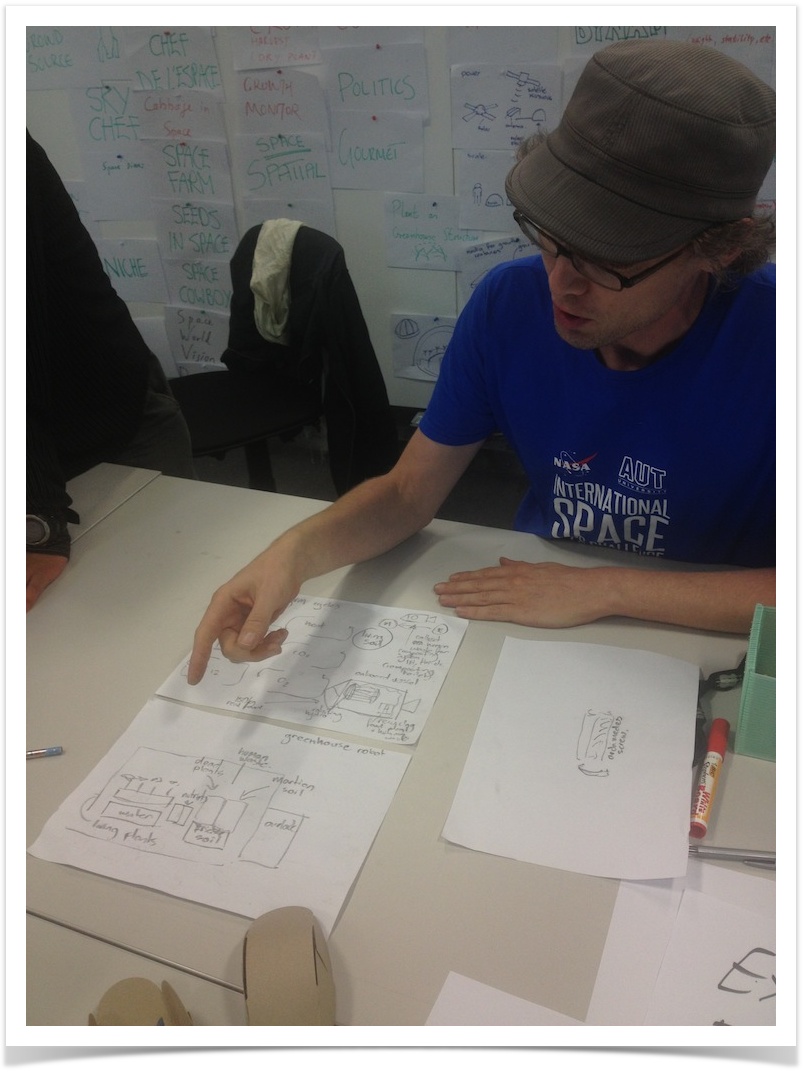I wasn't quite sure what to expect when I showed up at AUT University in Auckland today. I'd read about the NASA Space Apps Challenge in the news last year, and browsed the website many times over the past few weeks in my attempts to learn more and perhaps get involved. It seemed hard to 'get a picture' of what it exactly was and how I could help out. For anyone else in the same position, here's my account of the challenge so far.
The Launch
This is the first year that the International Space Apps Challenge ("the Challenge" – i'll abbreviate going forward) has been held in Auckland. It's jointly sponsored by the US Embassy and AUT University, and held at AUT's campus in Auckland.
It has been primarily promoted at the university, so there was a dominance of students arriving to participate - but a few others were also in attendance, including one man who travelled up from Wellington. A total of around 25 people were taking part in the Challenge. Tim O'Brien (university liaison from the US Consulate) and Sergei Gulyaev (AUT's Institute of Radio Astronomy and Space Research) opened the forum with some introductions and background, and the 'Launch Video' (below) from the Challenge.
The Challenges
There are 101 challenges broadly defined by the international space community (predominantly ESA and NASA I believe) covering a range of topics. Participants then work to try to come up with the most creative and innovative solution in a total of 48 hours. There's a software emphasis, as the challenge has been modelled on software 'hackathons' – but a few more physical and conceptual options to tackle, broadening the audience.
In Auckland, teams formed around four challenges:
You can either participate virtually, from your home/work – or onsite. Teams then broke out to separate work areas around campus, as suited their project requirements.
For most teams, this was the first real chance they'd had to sit down and start to plan out what they were doing. And given the 48-hour deadline, this was no small feat. Some of the project briefs are pretty open-ended, which allows the teams to play to their strengths – but can also overwhelm. By 6pm on the first night, that aspect of the challenge was quite apparent – the 'Spot the Station' team was already iterating through the first functional prototypes of their app, while at least two of the others were still finalising some aspects of their briefs. I left just as dinner arrived (good ol' pizza), but I suspect there will be some tough decisions being made this evening to lock in the project plans.
Collaboration
A key component of the challenge is to get people (and teams) to work together to solve these large problems. And NASA/etc have tried to facilitate this through a number of online tools – global whiteboards, a kind of virtual 'matchmaker' to help virtual participants join in or let a team find a much needed skill, etc. The person who wrote the project brief is also available to answer questions. Due to time-zones, New Zealand was one of the first to start the challenge – and while great to be the leading the way, it did give us a slight disadvantage as we had to wait several hours for other sites to come online and start collaborating.
But wait, there's more
In addition to having to solve their grand challenge in 2 days, they also have to create a way to communicate what they're doing and create a 'sales pitch' for the formal review on Monday morning. I suspect there will be very little sleep this weekend. Judges for the Auckland event are:
- US Ambassador, David Huebner
- CEO of New Zealand ICT Group, Candace Kinser
- Microsoft New Zealand Tertiary Education Sector Manager, Matt Bostwick
I'm quite impressed with the teams so far – I can see they're already thinking quite heavily about the communication aspect of their challenges, and I hope to see some impressive presentations on Monday.
It's a Hackathon
There are some local and global prizes – but from talking to the teams, I genuinely get the sense everyone involved is just in it for the challenge, the thrill. And that's where a global project like the Space Apps Challenge is a fantastic idea. According to the website around 8,500 people are sitting down and pooling their collective knowledge to 'make things better' – and it's this community spirit which is just fantastic to witness.
I know I'm looking forward to seeing what comes from the Spot the Station project, for one – there are plenty of tools out there that try to do this, but for me, as a regular user, never seem to work well. Let's see what great solutions 13 teams from different countries come up with!
I think tomorrow will be a wonderful day there – as a little sleep deprivation sets in, sugary drinks are consumed, and the hard work really happens. I'll try to keep you posted with some more photos and updates during the day. We'll also be present for the final presentations on Monday.
- Mark Mackay
